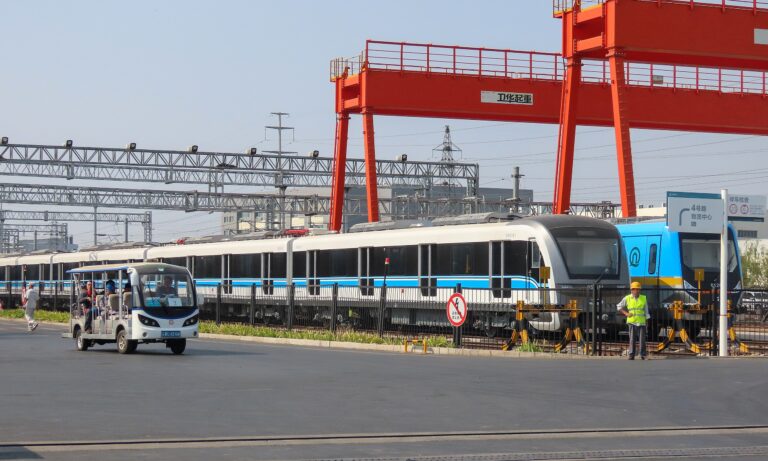
Poland has supported the European Commission’s derisking policy, which has clearly been directed against China, despite pronouncements to the contrary. Meanwhile, it has been trying to find its own way of implementing the policy, with progress so far largely driven by bottom-up initiatives.
Although the European Commission has officially maintained the concept of the triad (partner-competitor-rival) as the basis for relations with China, the rivalry aspect has clearly started to dominate. The process of derisking, i.e. reducing dependence on China, plays a primary role in it.
The Commission, also in the context of attempts to intensify the construction of a new EU industrial policy and the protection of the common market, is trying to urge the Member States to use the tools that are being introduced and to adopt derisking solutions themselves. The importance of action by the Member States was emphasised by the Secretary General of the EEAS, among others, during the last EU-US dialogue in February this year. This is all the more important as, according to the European Economic Security Strategy (EESS) announced last June, close cooperation among the individual governments and the business sector is crucial for derisking. Without such coordinated approach, it will be impossible to accurately identify existing dependencies on China.
Further Commission initiatives on the derisking agenda also include proposed work on monitoring outbound investment, expanding export controls and strengthening protection for the research sector with a focus on dual-use items.
Derisking vis-à-vis China thus becomes (at the same time as the gradual disconnecting of the EU from the Russian economy) an important element of the EU’s action, and thus of Poland’s foreign policy. Warsaw’s bilateral political and economic relations with China, both direct and indirect – related to the functioning of the Polish economy in global supply chains – stand to be affected.
Still, there is also a broader security dimension of ‘reducing dependence’ on China that relates to its ties with Russia. Several Chinese companies were included in the EU’s thirteenth package of sanctions against Russia adopted in February this year due to their assistance to Russia’s war effort. For Poland, the issue of Beijing’s support Russia’s imperial policy is of grave importance. China’s willingness to participate in the construction of a new European security architecture, as suggested repeatedly by President Xi Jinping and more recently by China’s government Eurasian representative Li Hui during his meetings in Europe, puts Beijing’s interests directly opposite to those of Warsaw.
Different Layers of Dependencies
The degree of Poland’s dependence on cooperation with China varies. While the general dependence is low, it differs across individual economic sectors. The spectrum covers strategic areas – where disruption by China would adversely affect or even paralyze the operation of the Polish state – and economically significant areas – where disruption by China could cause losses in selected industries and result in, for example, production disruptions, lack of goods or an increase in their prices, dissatisfaction or protests by selected industries and consumers. Finally, it also involves on non-economic issues, i.e. enabling political influence on state decisions.
Vulnerability – as in other Central European countries – is relatively high in the electromobility sector, where the leading position of Chinese manufacturers means that their possible withdrawal would delay the construction of this sector in Poland. Cooperation with China in this area has, moreover, recently become commonplace throughout the EU and in Central Europe specifically. The participation of the Chinese company Geely in the Polish Izera electric car project, which is largely to be financed from EU funds, should also be considered in this context. Leaving aside the prospects for success of this cooperation (the new Polish government is considering how to continue it), a situation in which a Chinese manufacturer would produce Chinese cars in a factory built for Izera would contradict the idea of derisking.
The Polish government’s statements indicate efforts to engage with Chinese side in a way that benefits the Polish industrial sector as a part of broader European car industry supply chain. However, what is overlooked are the specific safety issues related to electric cars as a tool of data collection and transmission to China.
Poland’s high degree of dependence on China also applies to the active pharmaceutical ingredients (APIs). The issue lies not only in the monopoly of production in China in this area, but also in the price competitiveness of medicines based on these active substances. The latter problem is to be solved, among other things, by new regulations proposed in March this year by the Ministry of Health, which wants to use financial instruments to support the purchase of medicines whose production (including active substances) is located in Poland.
A medium level of dependence also applies to Chinese hardware and software in the telecommunications infrastructure. In 2020, equipment supplied by Chinese entities (mainly Huawei and ZTE) accounted for 58 percent of the 4G telecommunications network in Poland, and regulations limiting the presence of suppliers from countries such as China in the 5G rollout have only been partially implemented in law.
According to the European Commission’s Raw Materials Information System database, even before the COVID-19 pandemic, Poland imported over $750 million worth of raw materials from China, which accounted for approximately 3.2 percent of all imports of this type of goods, worth almost $35 billion. However, it is difficult to determine to what extent raw materials extracted or processed in China may have entered the Polish market indirectly, via third countries. The value of Poland’s raw materials exports to China in turn, amounted to more than $800 million, or about 4 percent of foreign sales of such products.
Derisking as Part of Poland’s Policy
Since the new government came in late last year, the Polish authorities have been trying to avoid the impression of a ‘change’ of stance (radicalization of policy) towards China. Policy towards Beijing is only a minor, albeit still important, element of foreign policy, especially in the face of persistent and increasing threats from Russian imperial policy. In this context, China is identified as a partner for Russia and thus a challenge for Poland. This is, however, mostly discussed behind closed doors, not in public, so as to be able to maintain continuity of communication and economic cooperation with Beijing.
This policy was pursued by Deputy Foreign Minister Władyslaw Bartoszewski during his visit in India in February this year, and a similar approach was also presented by Foreign Minister Radoslaw Sikorski during his meeting in Munich with his Chinese counterpart, Wang Yi. Polish representatives strongly emphasized the need to strengthen economic relations, above all the export of Polish products to China. At the same time, Warsaw reminded China of its obligations arising from permanent membership of the UN Security Council regarding policy towards the war in Ukraine.
However, diplomacy or the support of European Commission initiatives do not alone solve the problem regarding the transparent identification of the dimensions and scope of derisking in Poland. There is currently no leading institution(the Ministry of Foreign Affairs is not one) to coordinate Poland’s participation in, for example, the European Economic Security Strategy and consultations on business dependence on China, even if the the Chancellery of the Prime Minister has previously tried to play such a role. Intensification of activities in this regard could be facilitated by process of preparation of upcoming 2025 Polish Presidency of the European Council.
For this reason, derisking is currently a rather selective policy, largely trying to identify the risks and push Chinese entities away from sectors such as critical infrastructure. It still relies on legal solutions from years ago, including, for example, a 2015 law that introduces the possibility for the Minister of State Assets, the Minister of National Defence or the Economy Minister to block inbound investments with a stake of more than 20 per cent in strategic sectors such as energy, explosives production, the chemical industry or telecommunications. As a form of risk mitigation, specific rules were also included in the auction procedure for 5G frequencies in October 2023 allowing government services to analyse the cooperation of telecommunications companies with suppliers from countries that might threaten EU security.
Poland has not yet developed its own approach to derisking in a way that would permanently incorporate the policy into the country’s strategy in the international arena (and especially in its relations with China) and unify the administration’s approach to this issue. The success of the whole process is also not possible without identifying sectors and fields of risk related to Poland’s already existing dependence on China. This requires communication with business, which is the only one that has reliable data on the subject, whether it is the supply of semi-finished products or the participation of Chinese entities in production and supply chains.
Meanwhile, situation on the ground often develops counter to the derisking objectives. Warsaw signed an agreement to buy electric buses from the Chinese Yutong company, the Geely conglomerate has become the main partner in the construction of the Polish electric car Izera, and Chinese companies are competing to win a tender to develop an important port on the Baltic Sea. Poland is also an important investment location for Chinese electric car battery factories.
China’s investment presence itself is not as critical in terms of derisking as the state ultimately retains appropriate control. More risks as dependencies arise from the supply of intermediate products or raw materials from China, but also cooperation with Chinese companies in sensitive sectors such as artificial intelligence, genetics or research into dual-use products. In all of these sectors there is a lack of legal, systemic solutions that would transpose the Commission recommendations to the Polish legal system. In 2021, the Committee on Human Genetics and Molecular Pathology of the Polish Academy of Sciences issued warnings in this area, advising against the use of Chinese genetic tests, thanks to which companies from China collect extensive data on the population characteristics of individual countries, which in turn gives them an advantage in the development of the pharmaceutical sector.
In the context of hybrid threats and information warfare, Polish universities are also increasingly deciding to close Confucius Institutes – in the last two years two of such institutions have been closed, out of six previously operating. It can be seen in this context that some of the initiatives that fit into derisking definition are bottom-up, rather than state driven actions. Polish approach to derisking is thus a complex one. It does not exclude economic cooperation with China but tries to limit it in strategic sectors of the economy, including those relating to critical infrastructure, while also targeting ‘soft’ threats such as disinformation. This approach is in line with the position of the European People’s Party published 2021, according to which the EU may not be able to completely stop Chinese actions but must do everything to make sure they come at a price. After all, this position was drafted and presented by Radosław Sikorski, the current Polish foreign minister and at the time a member of the European Parliament.
Written by
Marcin Przychodniak
Molos123Marcin Przychodniak is an Analyst at Asia-Pacific program at the Polish Institute of International Affairs (PISM), focusing on Chinese politics and a former diplomat in Beijing.


